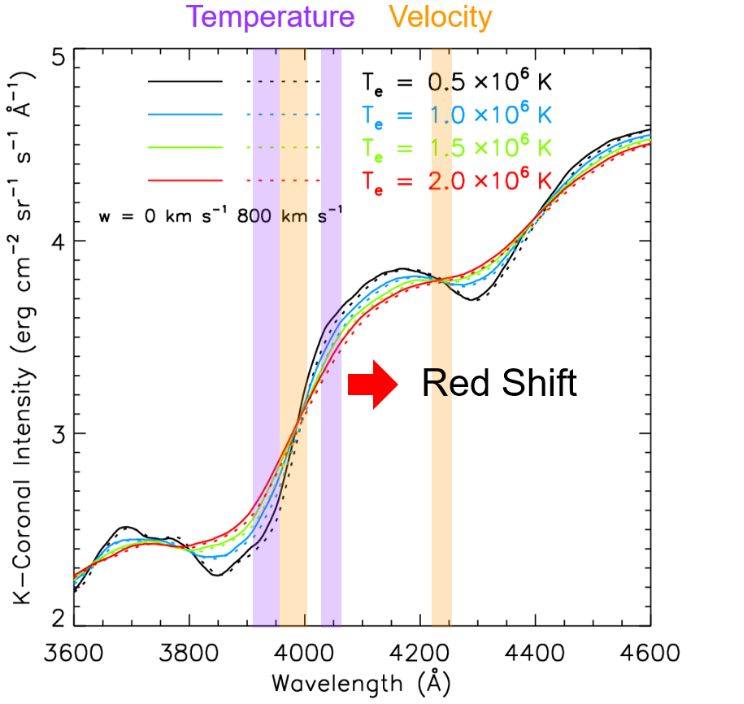The K-coronal spectrum is a result of photospheric radiation Thomson scattering off free coronal electrons. The photospheric spectrum is replete with thousands of narrow absorption lines and deep valleys associated with the conspicuous Fraunhofer lines. However, in Thomson scattering, the peaks are leveled and the valleys filled by thermal Doppler broadening, which is dependent on the temperature of the coronal electrons. With increasing coronal electron temperatures, the narrow photospheric spectrum lines are easily smoothed, leaving increasingly weaker residual depression in Fraunhofer line locations to form the K-coronal spectrum. Since coronal electrons flow away from the Sun at the speed of the solar wind, then the K-coronal spectra also get red-shifted. These properties can be used to determine the electron temperature and speed by matching the shape and shift of the measured K-corona spectrum with spectral models or by measuring the K-coronal polarized brightness ratios at specific wavelength pairs and comparing them with spectrum (Menzel & Pasachoff 1968; Cram 1976; Ichimoto et al. 1996;1997; Takahashi et al. 2000; Reginald & Davila, 2000; Reginald et al. 2003; 2011)


- Cram, L. E. 1976, Sol. Phys., 48, 3
- Ichimoto, K., Kumagai, K., Sano, I., et al. 1996, Publ. Astron. Soc. Jpn., 48, 545
- Ichimoto, K., Kumagai, K., Sano, I., et al. 1997, NATO ASI Series C 494, Theoretical and Observational Problems Related to Solar Eclipses, ed. Z. Mouradian, & M. Stavinschi (Dordrecht: Kluwer Academic Publishers), 31
- Menzel, D. H., & Pasachoff, J. M. 1968, Publ. Astron. Soc. Pac., 80, 458
- Reginald, N. L., & Davila, J. M. 2000, Sol. Phys., 195, 111
- Reginald, N. L., St. Cyr, O. C., Davila, J. M., & Brosius, J. W. 2003, Astrophys. J., 599, 596
- Reginald, N. L., Davila, J. M., St. Cyr, O. C., et al. 2011, Sol. Phys., 270, 235
- Takahashi, N., Yoneshima, W., & Hie, E. 2000, ASP Conference Series 205, Last Total Solar Eclipse of the Millennium, ed. W. Livingston, & A. Özgüç. (San Francisco: Astron. Soc. Pac.), 121

